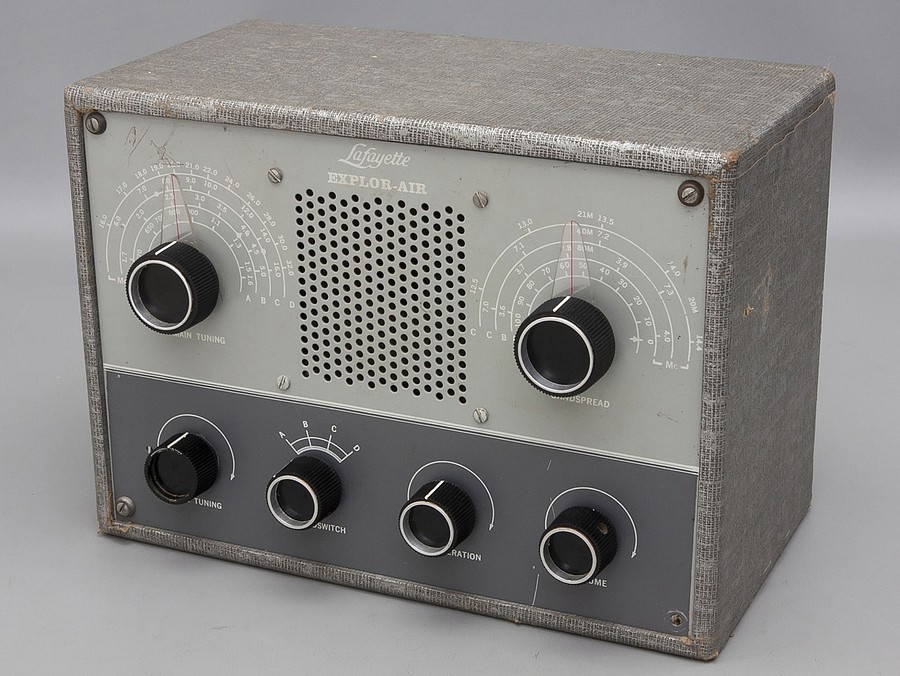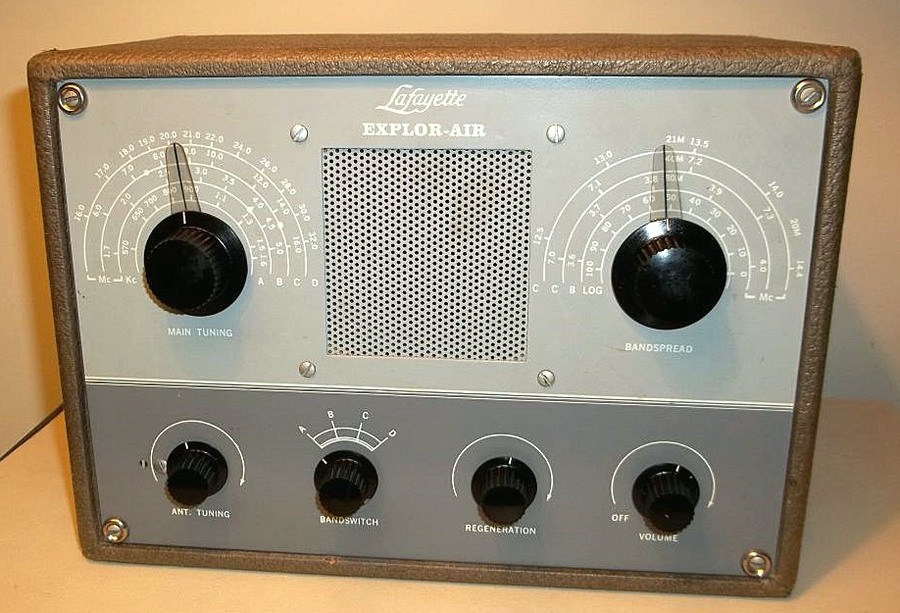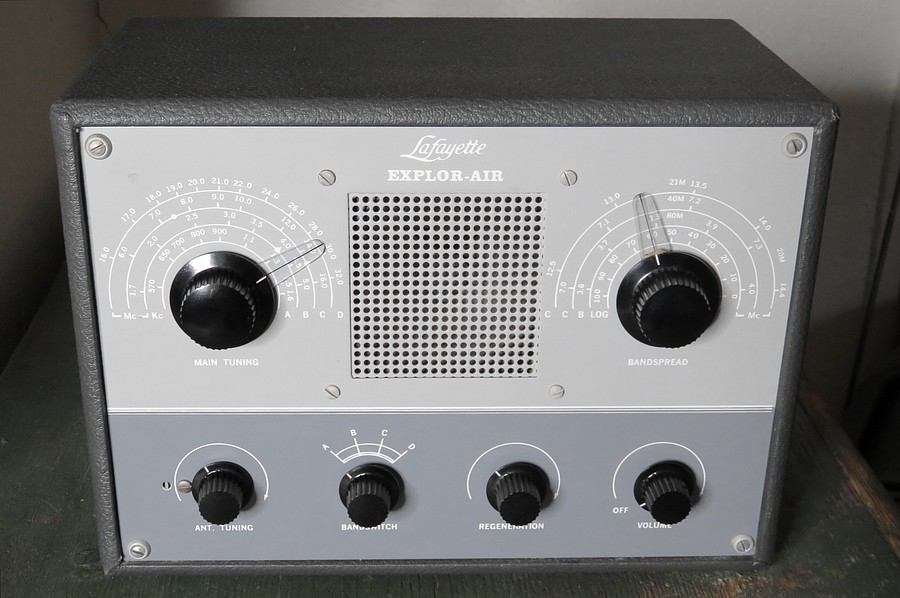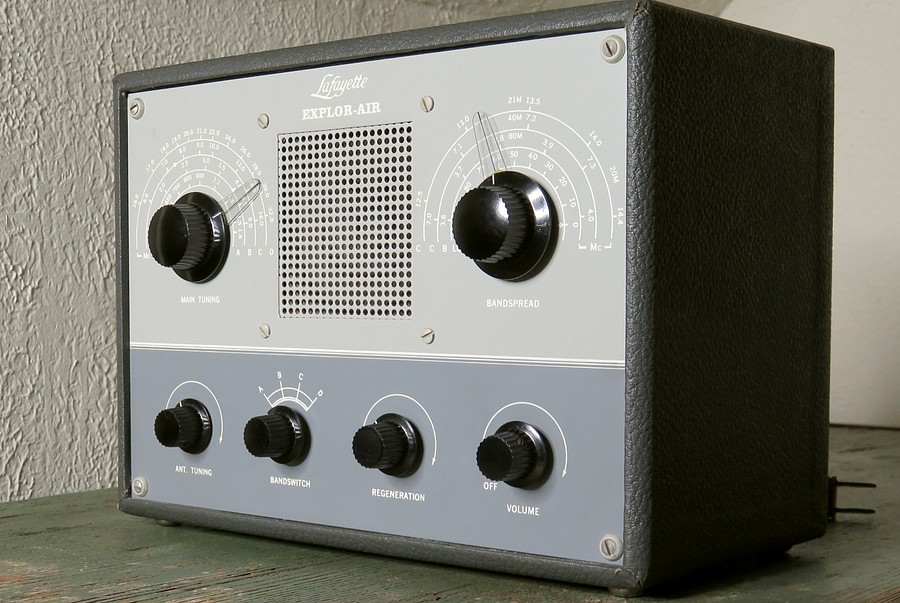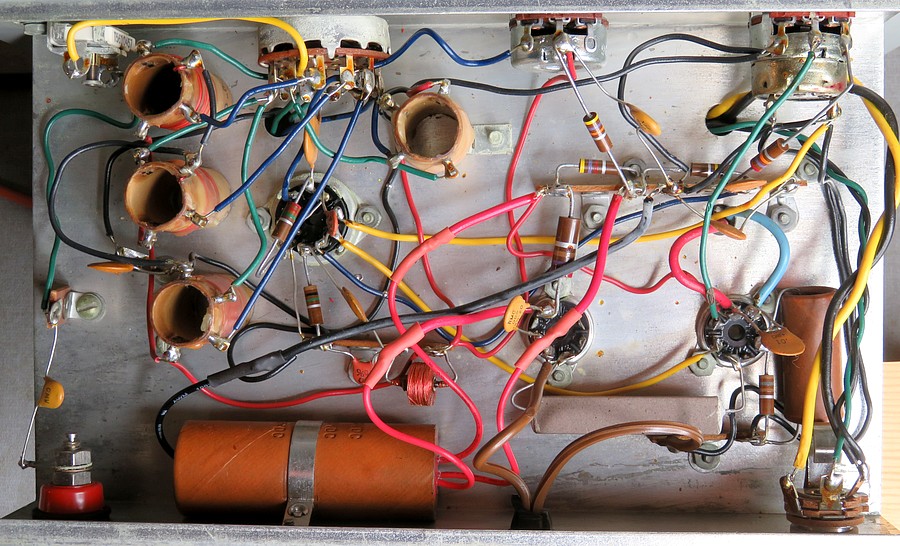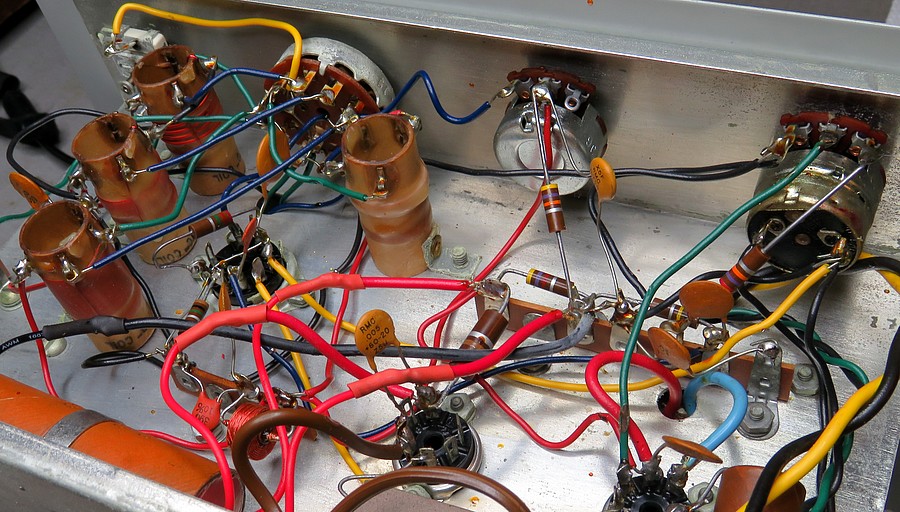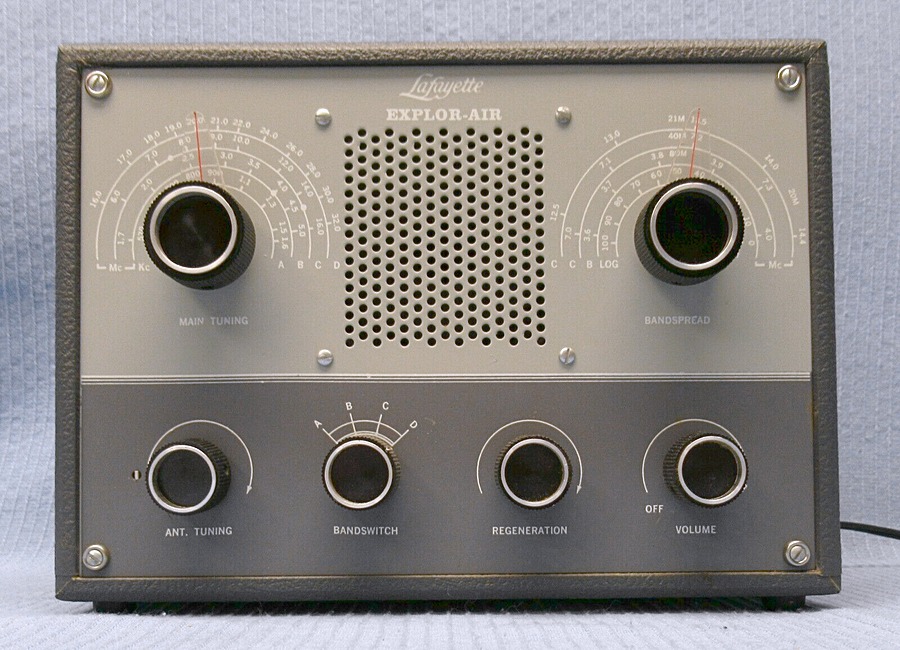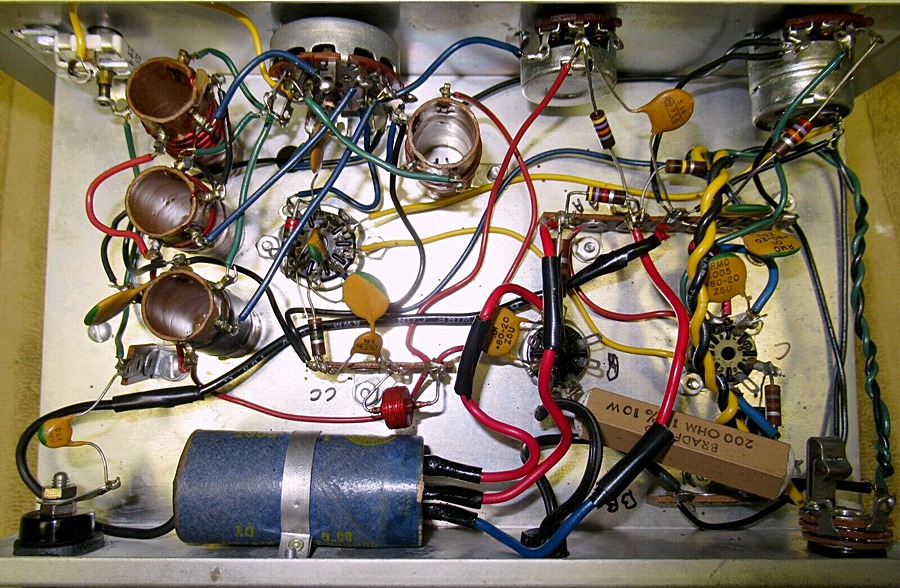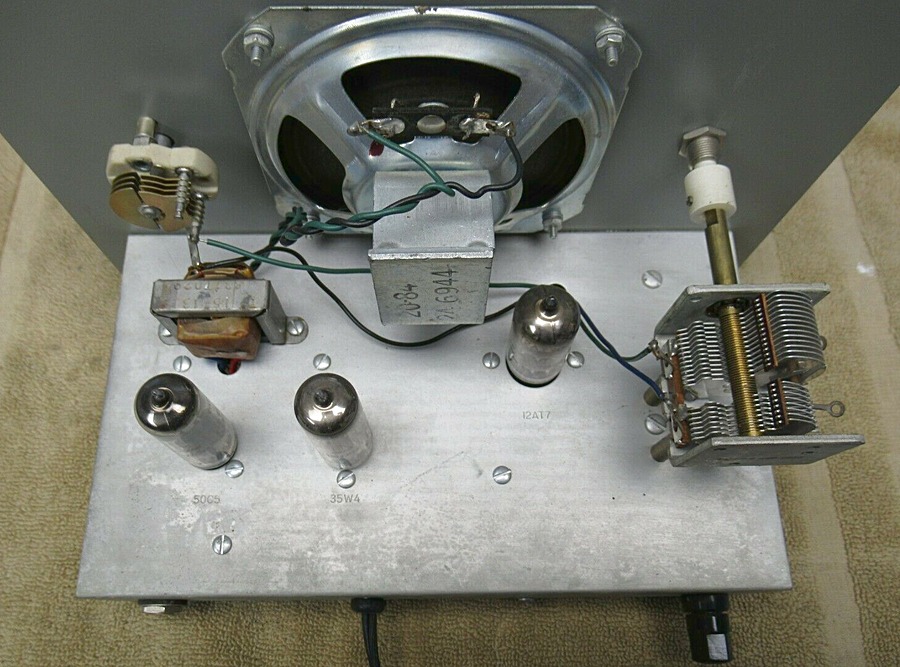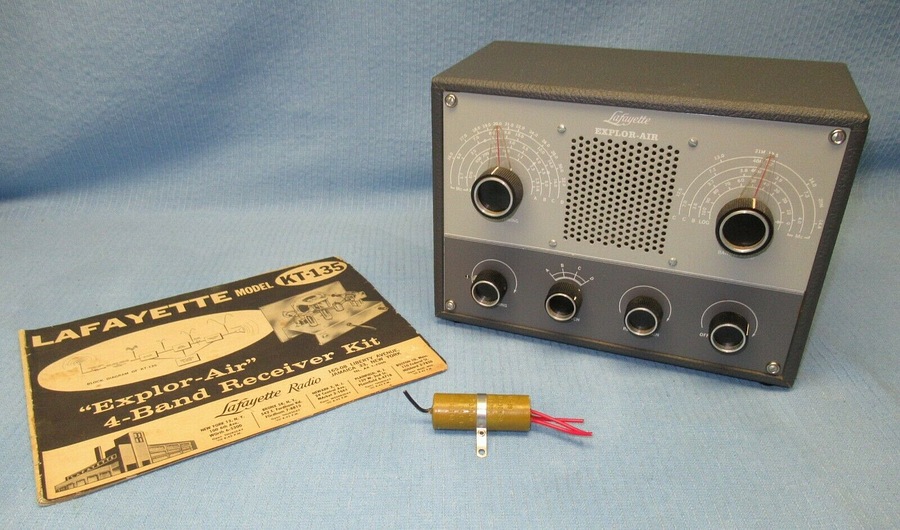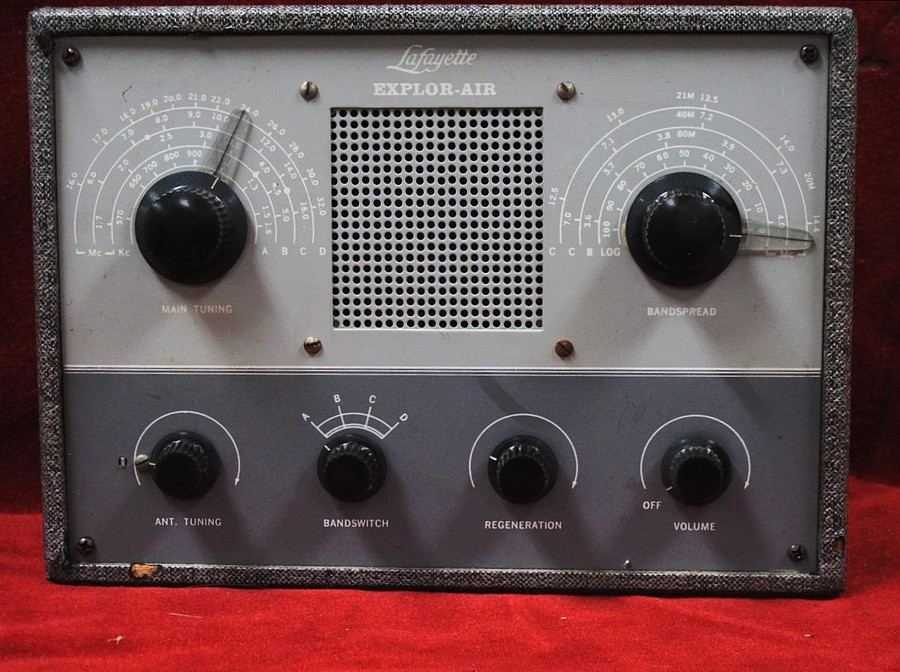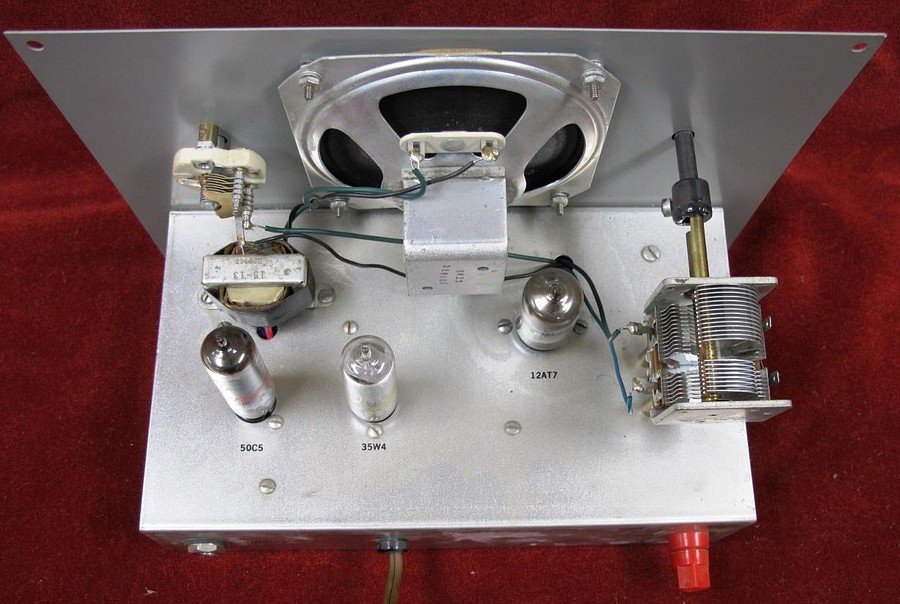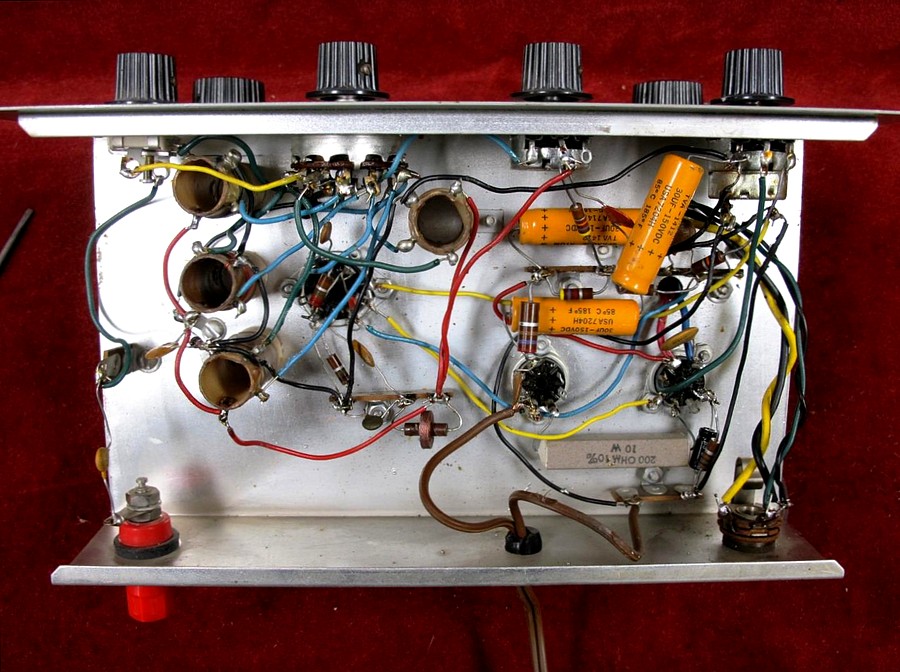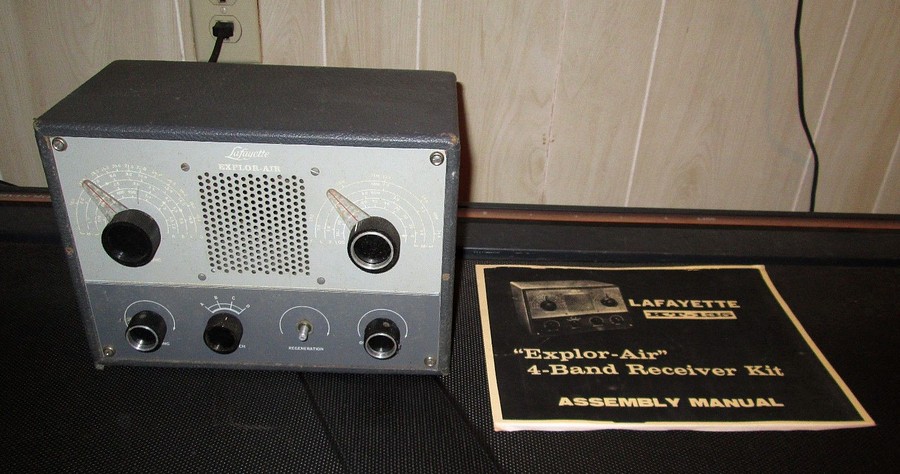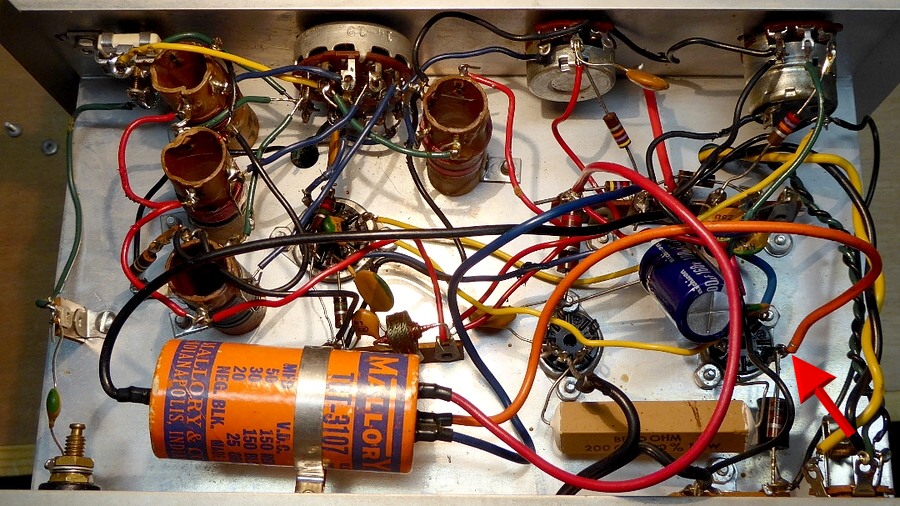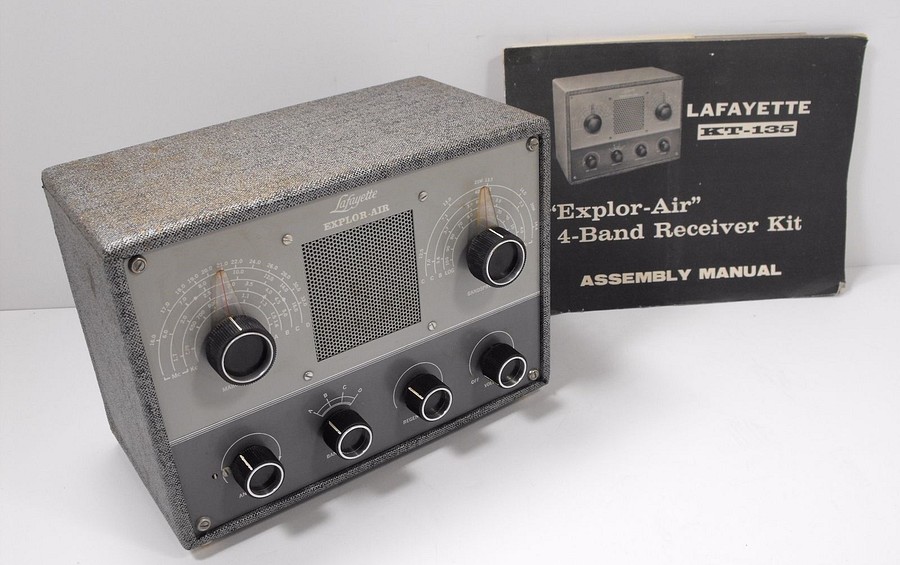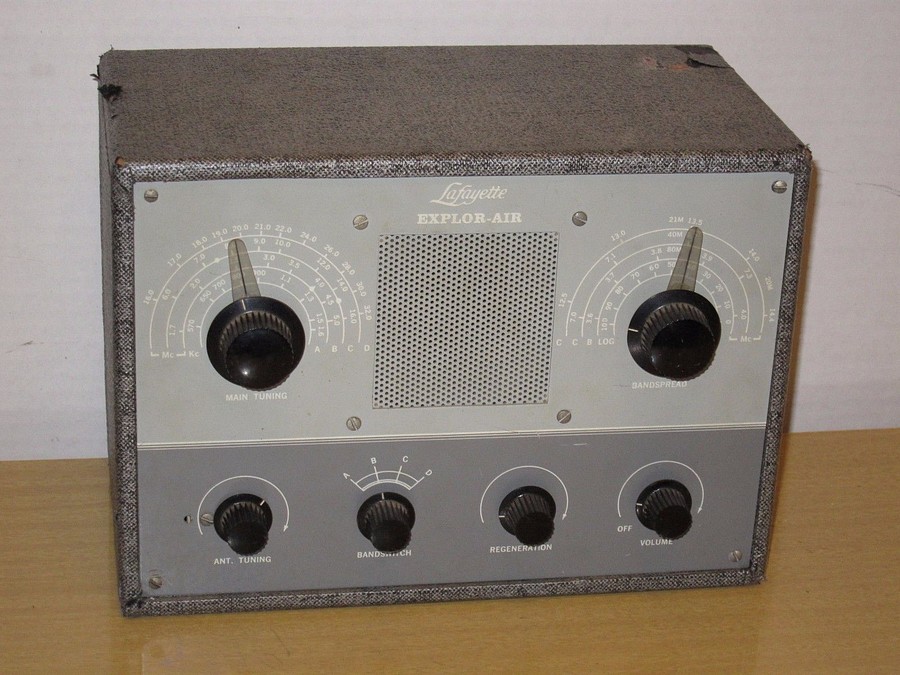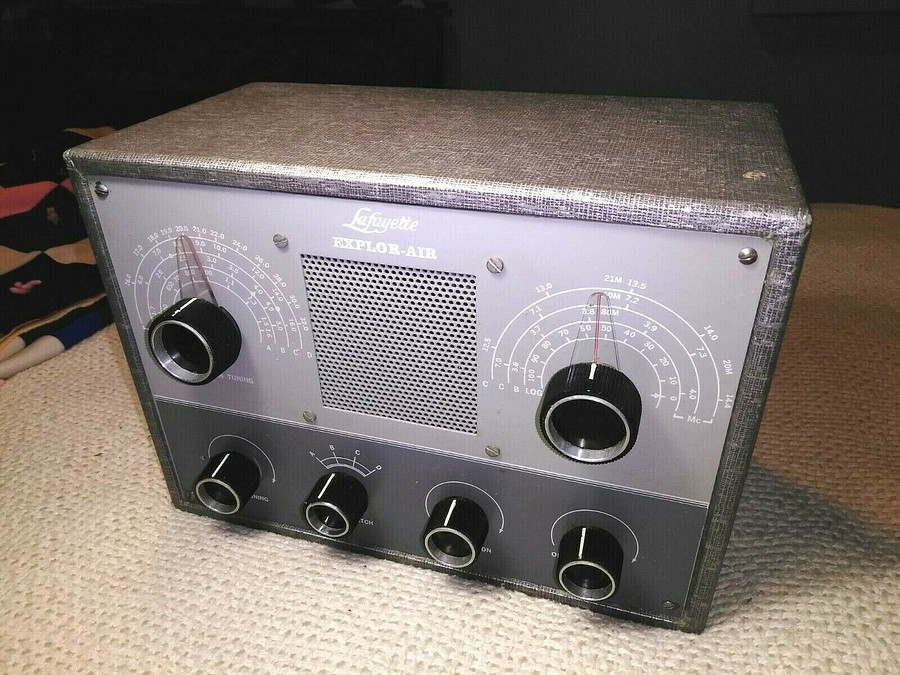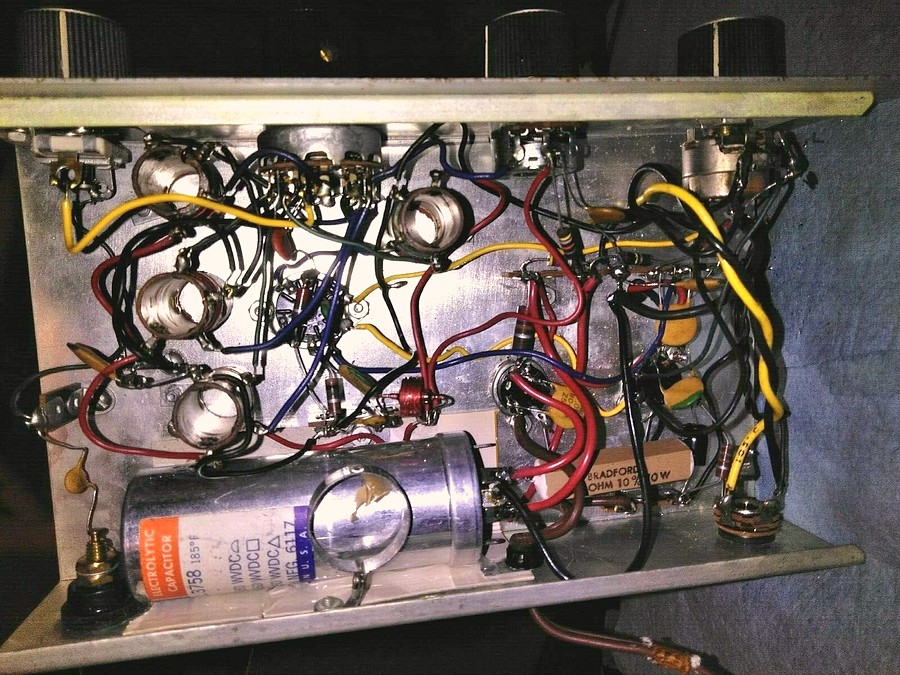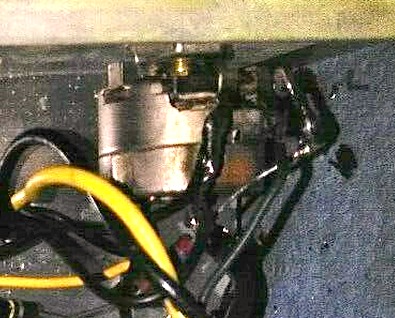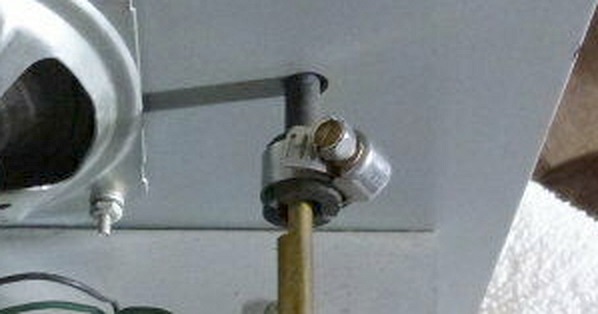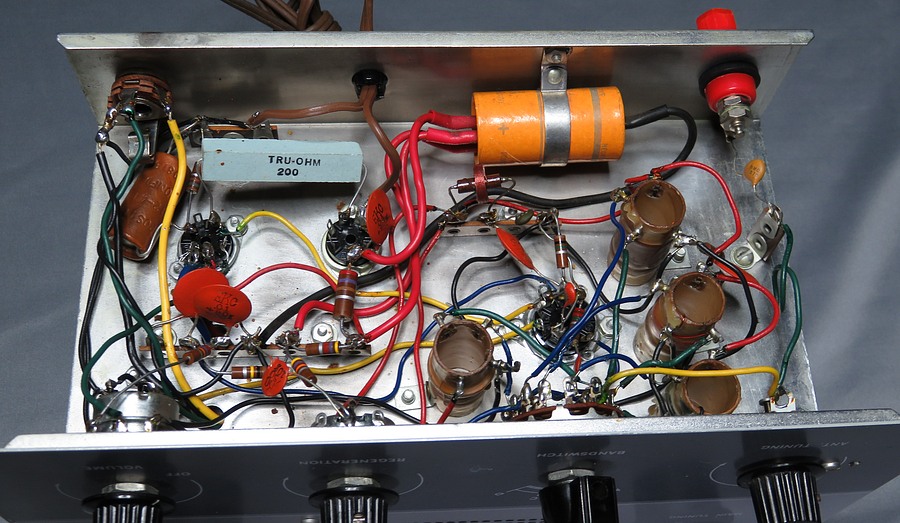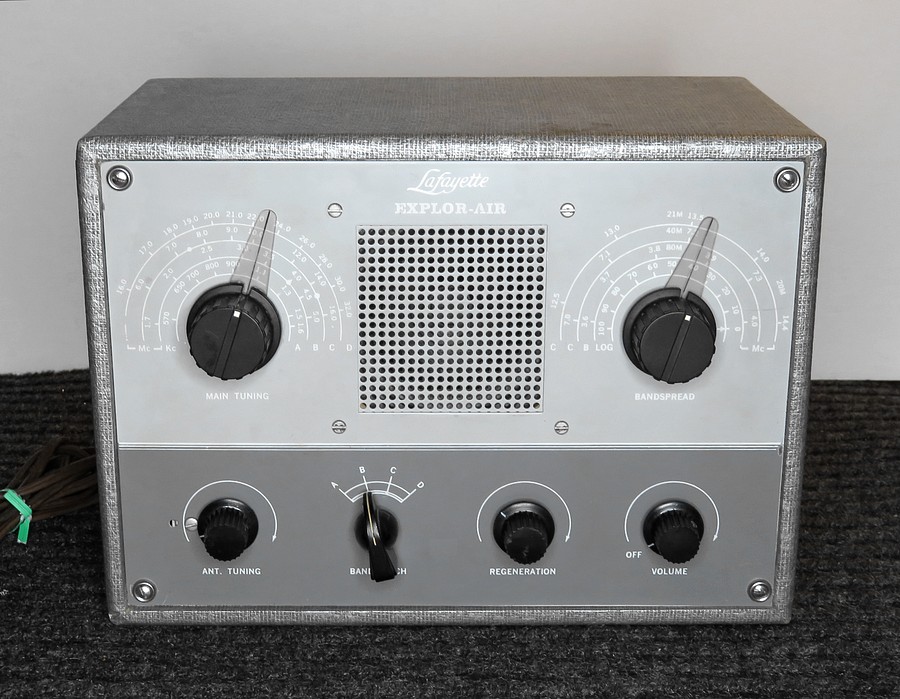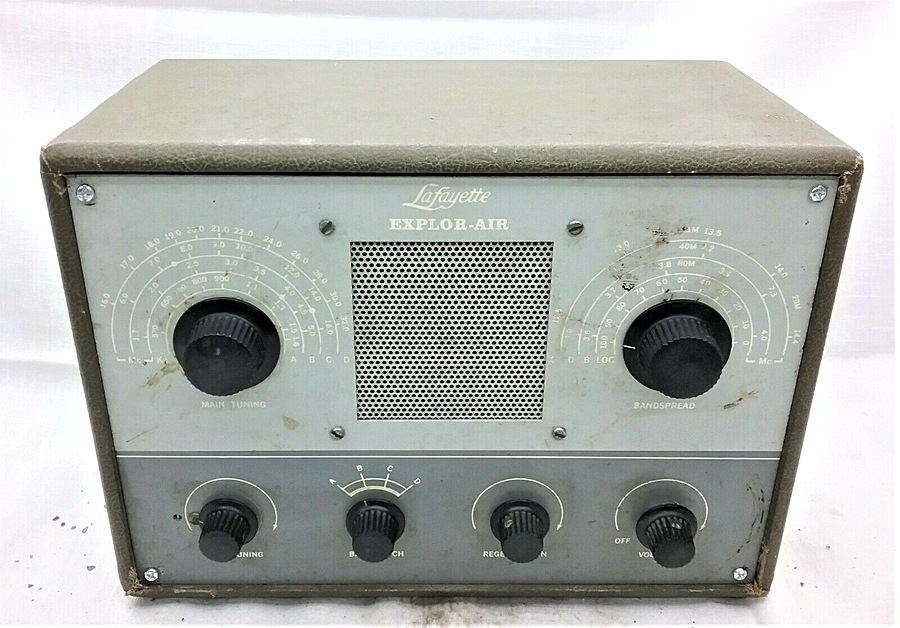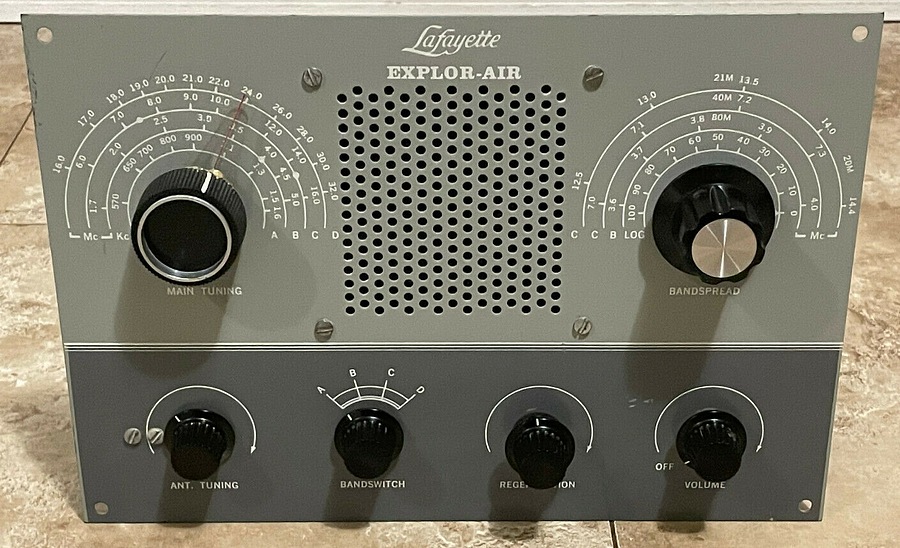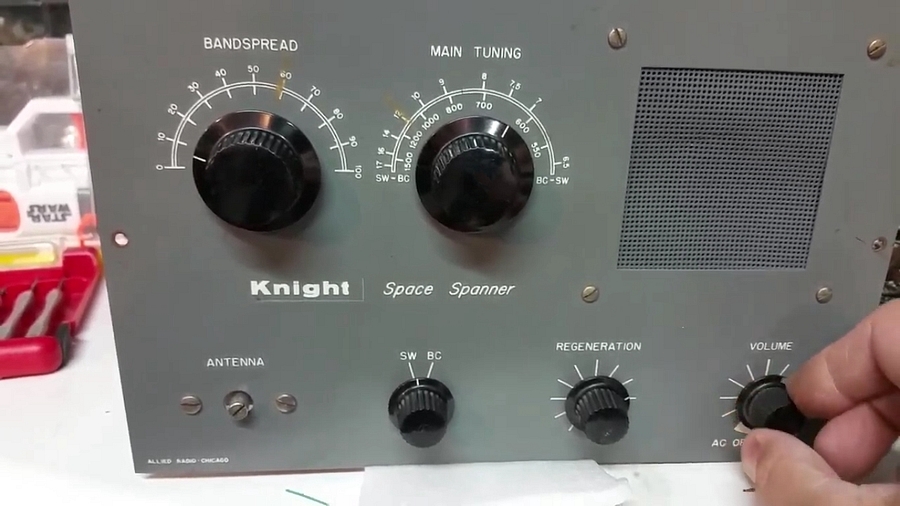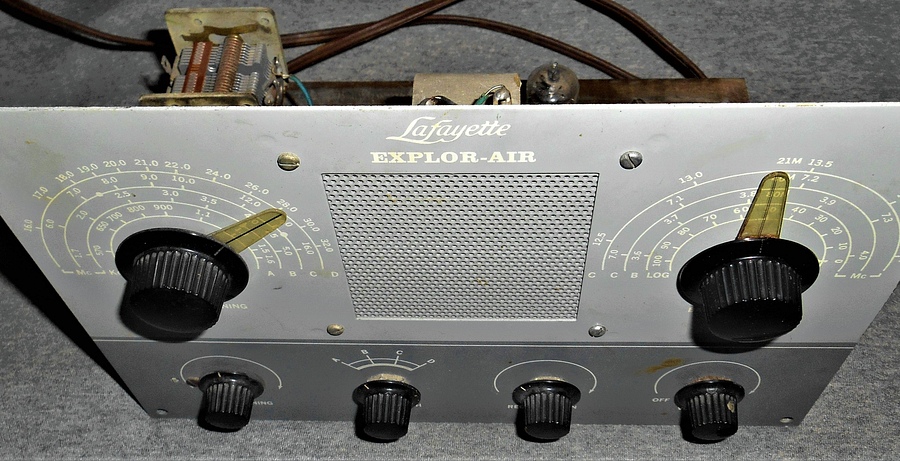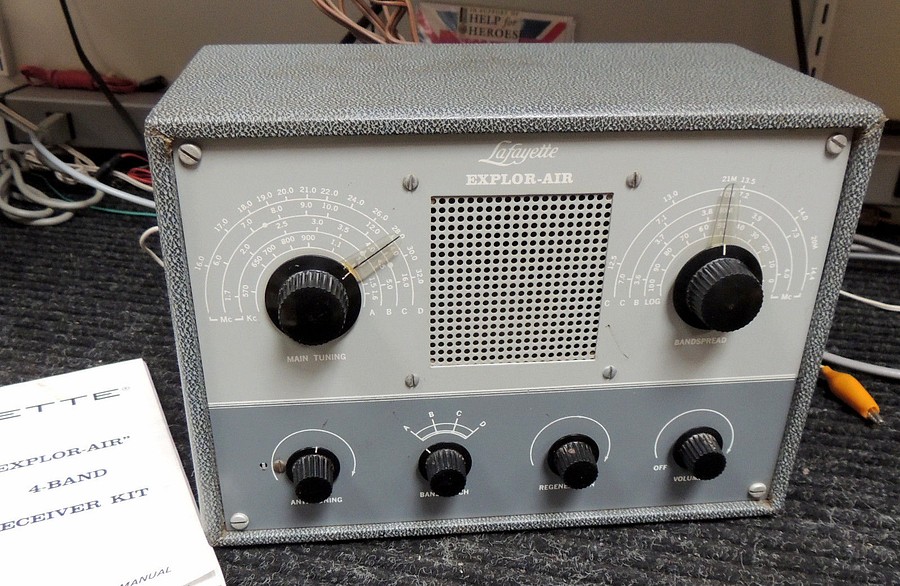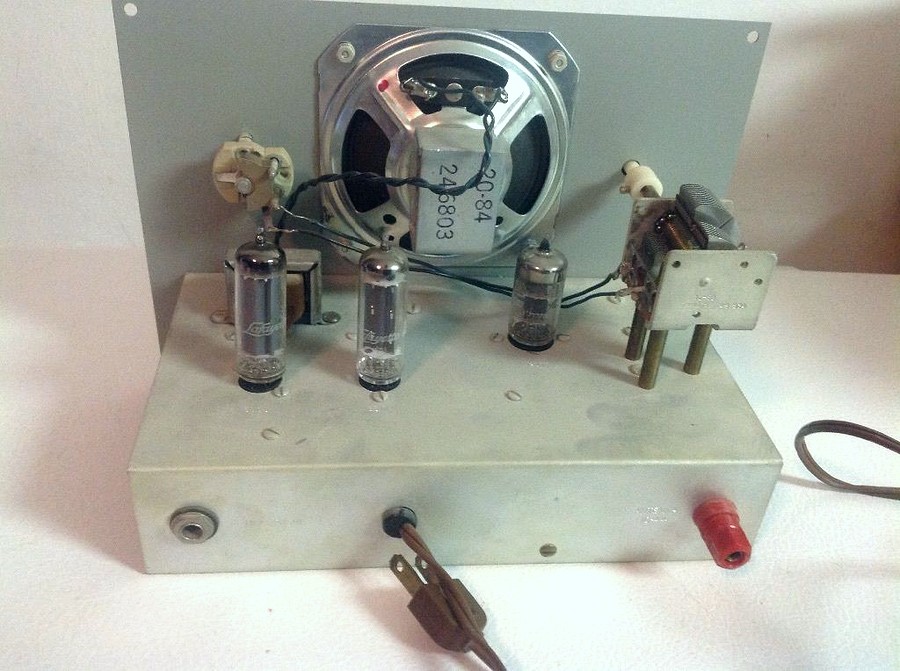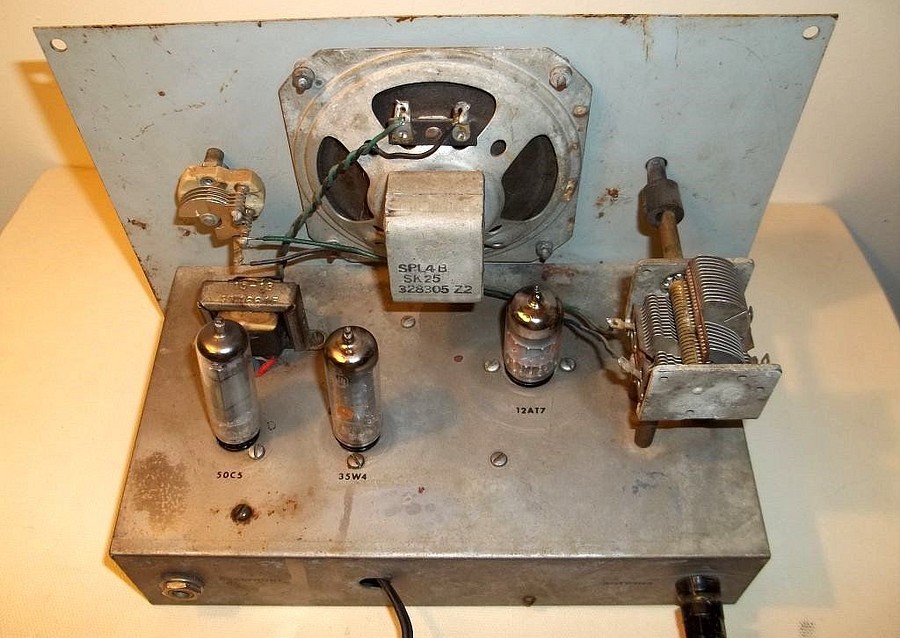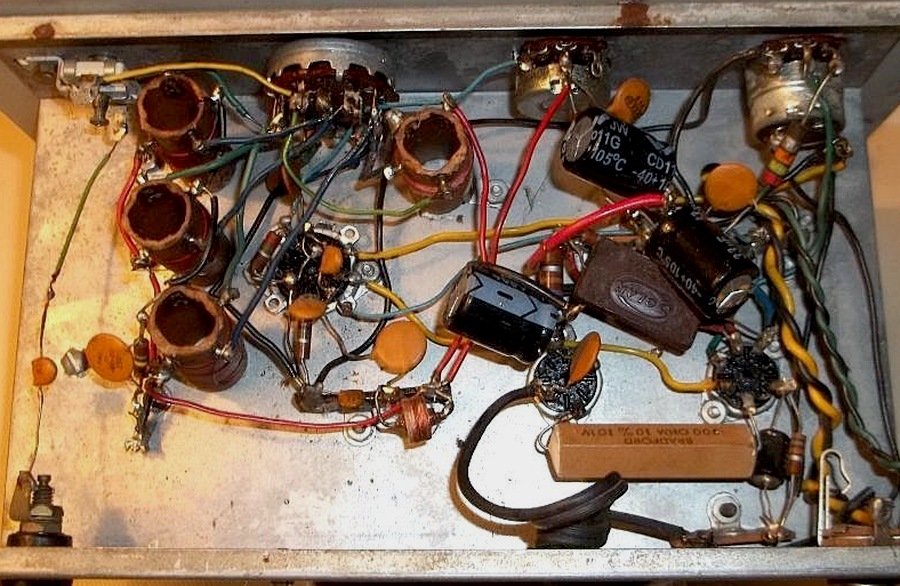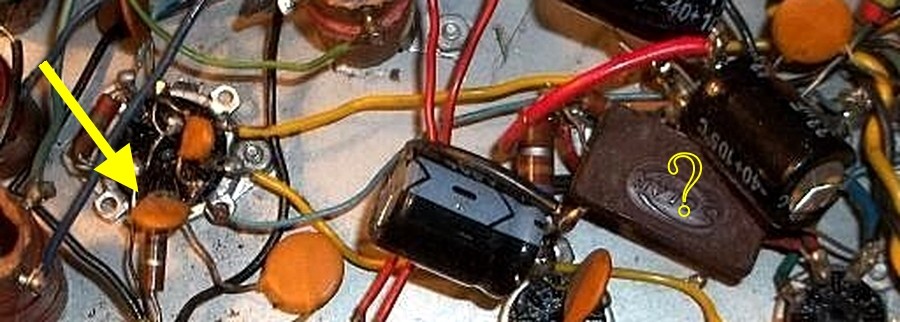 |
Lafayette KT-135 EXPLOR-AIR radio
kit |
 |
|
|
|
|
|
|
MORE KT-135
EXPLOR-AIR
KITS! |
|
|
|
|
More KT-135s. Because once you've
assembled one, you can't stop looking at how other people
assembled theirs.
On this unit the bottom left knob is missing the aluminum insert.
These are impossible to find.
You have to buy another KT-135 just for the knob, then you
have a $100 knob and another radio that needs the same
knob. |
|
|
| Bilbo Baggins examines the
metal ring on one of
the later style knobs. For all practical purposes,
the ring may as well have been
forged in the fires of Mount Doom. These knobs with
metal rings are
hidden even from the Eye Of Sauron, and the Dark
Lord himself would be unable to find one, though he
wage war upon the entire earth in his attempt. In
lieu of that, he could try ebay. |
|
|
|
|
|
Second Prize Winner! |
|
|
|
|
|
|
|
|
First Prize Winner! |
|
|
|
|
|
A pristine front panel and cabinet! |
|
|
|
|
|
This came from ebay. It sold for $90
with shipping on Aug 26, 2018. The seller got it
at a yard sale, so the builder is now unknown. |
|
|
|
|
Whoever built this one did an excellent
job.
The soldering is so good the new filter caps were spliced in
so as not to disturb the connections.
It looks sloppy, but if follows the original wires exactly.
Notice the line cord (brown wire) is connected in a similar
manner. |
|
|
|
|
|
|
|
Another First Prize winner!
Yes, two winners. This one has the post-1967 knobs and is
actually from 1969. From ebay, October 2021. |
|
|
|
|
Expertly assembled.
Too bad about the
electrical tape, but this was sold with the original
capacitor included, which can be re-stuffed and reinserted. |
|
|
|
|
|
Notice there is a bushing where the
capacitor shaft goes through the front panel on the right. A
nice improvement. |
|
|
|
|
| Very interesting manual
cover! Included was the original filter cap, which
can be restuffed. The person who won this auction
didn't pay for it! It was relisted and someone used
the "buy it now" option and grabbed it for $200.
|
|
|
|
|
|
|
|
|
|
"This is beautiful! What is that?
Velvet?" |
|
|
|
|
|
|
|
Very nice. Very clean. With the maroon
velvet background, this is KT-135 porn. |
|
|
|
|
|
|
|
|
Check out the manual. Black with a white
border. It seems to be an older manual, but the front panel
of the radio and the knobs (what are left of them) are the newer version.
|
|
|
|
|
|
|
The orange wire from the filter
capacitor shouldn't be on that tube socket, because the
original capacitor is still in the circuit.
You can barely see it, to the left of the arrow, under the
resistor. |
|
|
|
|
|
|
Old style front panel, new style knobs, old
style manual. Very interesting! |
|
|
|
|
|
|
Very nice front panel. What happened to the
finishing washers in the corners? |
|
|
|
|
|
|
|
|
A nice one from 1972, but lacking the
corner finishing washers. This went up on ebay in February
of 2019. |
|
|
|
|
Here's the underside. A big metal filter
capacitor has been wedged between the coil for Band B and
the chassis, held in by the bracket from the original
capacitor. Not to worry, a piece of paper has also
been wedged in to prevent all sort of short circuit
mayhem, since the outside of the can is now
connected to the AC line. I wonder if anyone noticed that
even though the can is insulated from the chassis with a
piece of paper, the bracket holding it in place is bolted
right to said chassis.
The AC cord is bent at an impossible angle. How is it
staying that way? It also appears
there was a small fire in the volume control, top right.
The seller stated it was in "amazing working condition." It
sold for $169 + $16.92 shipping. |
|
|
|
|
|
"Amazing,
working" volume control.
Melted wires, and rust where the
plating had been burnt off - in a bright orange flash
and a loud report. |
|
|
|
|
|
MY EYES!! Aaaargh!! |
|
|
|
|
|
|
|
All the disk capacitors in this early
model are red! The filter capacitor has been replaced with
one made by "Sprague."
Whoever replaced it didn't bother with the DOZEN bad solder
joints that made this radio unusable. |
|
|
|
|
|
|
|
|
Here's the front of the radio that has
the red disk capacitors. Very interesting pointer knobs. |
|
|
|
|
|
|
Those wide dial pointers are very
disturbing. |
|
|
|
|
|
The set with the wide dial pointers has
a speaker grille that extends past the speaker. |
|
|
|
|
|
|
|
|
This one has something in common with
the one above. What do you think it is? |
|
|
|
|
|
|
|
|
This one sold for $152.50 plus $30 on
ebay in November of 2021. It has something in common with
the two above. |
|
|
|
|
| Notice the "collar" on the
small knobs. These knobs are the same Daka-Ware
knobs used on the Knight Space Spanner. |
|
|
|
|
|
|
Here's a Knight Space Spanner.
What do you think about the knobs? |
|
|
|
|
|
The mystery deepens... Mike Cutler found
this one in the trash. It's a very early one, all original,
probably from the 1960s. |
|
|
|
|
It's extremely unlikely this
KT-135 was modified in any way and we see the
"collars" on the knobs, so Lafayette must
have used them in the early days of production. The good news is that these
knobs are still being made today so you can use them
in a restoration.
Search for Daka-ware 1600 &
1610, or Davies 1600 & 1610 skirted knob. |
|
|
|
|
|
|
|
This is a nice one, except for the screws
holding it into the case. Thankfully, they're not Phillips
heads! |
|
|
|
|
|
|
Here's one from 1968 with Lafayette
tubes. |
|
|
|
|
|
|
From ebay. Let's see a picture of the front,
please. Oh wait. There isn't one. Where is the strain relief
on the AC cord? |
|
|
|
|
The capacitor on the left is floating in
the air! What happened to the terminal post?
See the chewed up tops on the coils? That's what happens
when you don't have a cabinet.
|
|
|
Not sure what is going on here.
There is an extra capacitor on the left. An antique
"Solaris" cap on the right is connected to something or
other. |
|
|
|
|
|
|
|
|
In an otherwise beautifully soldered
radio, a large metal filter capacitor wrapped with duct tape
lurks inside. |
|
|
The tape has peeled back exposing
the bare metal can, which is a a thousandth of an inch away from touching
the chassis.
From ebay,
March 2025. I bought this one for $89! |
|
|
|
The cabinet has been recovered
with self-stick vinyl shelf paper. The original covering was beyond repair. |
|
|
|
|
|
|
|
|
|
This is what happens to your speaker when dad has to get up for work at 6AM and
you start fiddling with the regen control at one in
the morning. From ebay November 2024. |
|
|
|
|
|
Next, more KT-135s! |
| |
|
|
| |


